


Techniques For Winning At Pickleball

Pickleball, the thrilling paddle sport that has taken the world by storm, requires a combination of finesse, strategy, and skill to excel. Whether you're a newcomer to the game or a seasoned player looking to up your performance, mastering key techniques is essential for winning at pickleball. In this article, we'll explore the techniques that can elevate your game and lead you to victory on the court.
Serve Placement: The serve is a pivotal part of pickleball, setting the tone for each point. Aim for precision over power, as a well-placed serve can put your opponents on the defensive. The ideal placement is deep into the opponent's service court, near the baseline, and close to the sideline, which narrows their return options.
The Third Shot Drop: This technique is essential for gaining control of the net and outmaneuvering your opponents. After the serve, the third shot should be a soft, low drop shot that clears the net and lands near the non-volley zone (the kitchen). The goal is to minimize your opponent's offensive opportunities and establish a strong position on the court.
Positioning And Court Coverage: Successful pickleball players understand the importance of court positioning. In doubles, it's essential to cover the net and work as a team. The "Two-Up, Two-Back" strategy is often employed, with two players moving forward to control the net while the other two remain back to cover the baseline.
Volleys: Efficient volleying is a critical skill in pickleball. Mastering the technique of volleying, which involves hitting the ball out of the air before it bounces, enables players to dictate the pace of the game and put pressure on their opponents. Quick reflexes, precision, and the ability to control the net are key aspects of successful volleying.
Dinking: The dink is a short, soft shot made close to the net. It's an essential technique for maintaining control and patience during rallies. Dinking allows you to keep your opponents off balance, create opportunities for errors, and work your way toward the net for a put-away shot.
Spin Control: Adding spin to your shots can be a game-changer in pickleball. Backspin can make the ball challenging to control, while topspin adds depth and accuracy to your shots. Learning to apply spin effectively can keep your opponents guessing and increase your shot variety.
Footwork: Efficient footwork is crucial for court coverage and positioning. Players must be able to move quickly and make precise steps to reach the ball and maintain proper positioning. Practice lateral movements, pivots, and quick changes of direction to enhance your footwork.
Soft Game Strategy: Embracing the "soft game" strategy is a key aspect of winning at pickleball. Instead of trying to overpower your opponents, focus on precision, placement, and patience. The soft game strategy involves dinking, drop shots, and controlled plays to disrupt your opponent's rhythm and lead to unforced errors.
Mental Toughness: Pickleball can be as much a mental game as a physical one. Developing mental toughness, maintaining focus under pressure, and staying composed in tight situations are essential for consistent success on the court.
Mastering the techniques for winning at pickleball requires a combination of skill, strategy, and mental fortitude. Whether you're working on your serve, perfecting your volley, or refining your court positioning, these techniques can help you become a formidable player. Consistent practice, determination, and a willingness to learn from your experiences are key to achieving success in this exciting and fast-paced sport.
Where Thrill Meets Nature
 Unlike traditional road biking, mountain biking offers an escape from the hustle and bustle of city life. Riders have the opportunity to explore remote and untouched natural landscapes. These less-accessible areas are often devoid of crowds, providing the solitude and tranquility that many nature enthusiasts seek. Mountain bikers have the privilege of delving deep into the wilderness, where they can revel in the serenity of the outdoors.
Unlike traditional road biking, mountain biking offers an escape from the hustle and bustle of city life. Riders have the opportunity to explore remote and untouched natural landscapes. These less-accessible areas are often devoid of crowds, providing the solitude and tranquility that many nature enthusiasts seek. Mountain bikers have the privilege of delving deep into the wilderness, where they can revel in the serenity of the outdoors.
The diversity of environments that mountain bikers can explore is astounding. From dense, verdant forests to arid, rocky deserts, there's a terrain to suit every rider's preference. Whether one desires the lushness of the woods or the technical challenges of rocky trails, mountain biking offers a variety of settings to explore.
Mountain biking encourages an environmentally conscious approach to outdoor adventure. Riders are typically aware of the importance of preserving the natural environment and adhere to the principles of "leave no trace." This responsible ethos includes not disturbing wildlife, avoiding littering, and respecting trail rules and guidelines. This ensures that the beauty of the outdoors remains intact for generations to come.
The sense of adventure and camaraderie further enhances the experience of mountain biking in the great outdoors. Riding with friends or participating in group rides allows riders to share the thrill and magnificence of the journey. The bonds formed on the trail often lead to lasting friendships and a shared passion for outdoor exploration.
The great outdoors also opens the door to challenging terrain. Mountain biking trails often feature steep descents, rocky paths, tight switchbacks, and technical sections. The unpredictability of the trails ensures that each ride is an adventure, with riders overcoming obstacles, conquering fears, and pushing their boundaries.
The Foundation Of Every Great Ride
 Surfboards come in various shapes, sizes, and designs, each tailored to specific wave conditions, rider skill levels, and surfing styles. The key elements of surfboard basics include:
Surfboards come in various shapes, sizes, and designs, each tailored to specific wave conditions, rider skill levels, and surfing styles. The key elements of surfboard basics include:
Length: Longer boards are more stable and buoyant, making them suitable for beginners. Shorter boards are more maneuverable and designed for advanced riders.
Width: Wider boards provide better stability, while narrower boards are more responsive and agile.
Thickness: Thicker boards offer more buoyancy, allowing for easier paddling and wave-catching.
Tail Shape: Different tail shapes affect control and turning abilities. Common tail shapes include round, square, squash, and pin tails.
Rocker: The curve from nose to tail influences a board's maneuverability. More rocker enhances turning ability.
Fins: The number, size, and placement of fins on a board significantly affect stability, tracking, and control.
Selecting The Right Surfboard:
When choosing a surfboard, several factors must be considered, including your experience level, the types of waves you'll be riding, and your personal preferences. Here's a guide to help you select the right surfboard:
A Phenomenon On The Rise
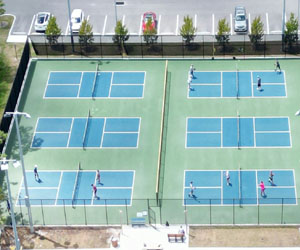 Community Building: Pickleball is more than just a game; it's a social activity that promotes interaction and community building. Local pickleball clubs, groups, and leagues have sprouted up in communities across the globe. These groups provide a platform for socialization, camaraderie, and support. Pickleball players often forge lasting friendships on the courts, both indoors and outdoors.
Community Building: Pickleball is more than just a game; it's a social activity that promotes interaction and community building. Local pickleball clubs, groups, and leagues have sprouted up in communities across the globe. These groups provide a platform for socialization, camaraderie, and support. Pickleball players often forge lasting friendships on the courts, both indoors and outdoors.
Intergenerational Play: Pickleball's cultural impact extends to intergenerational play. It's a sport where grandparents can compete alongside their grandchildren, fostering connections between different age groups. This inclusivity across generations strengthens family bonds and community ties, making it a unique cultural phenomenon.
Economic Boost: The growing popularity of pickleball has led to an economic boost in areas where the sport is thriving. This includes the construction and maintenance of pickleball courts, the sale of paddles and equipment, and hosting tournaments and events. Local businesses, from restaurants to sporting goods stores, often benefit from the influx of players and spectators.
Tournaments And Events: The competitive side of pickleball is a significant driver of its cultural impact. Tournaments and events draw players and enthusiasts from near and far, contributing to a sense of excitement and camaraderie. Many of these events incorporate charity fundraisers, further cementing pickleball's positive influence on communities.

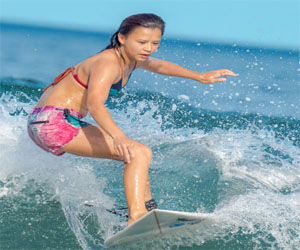


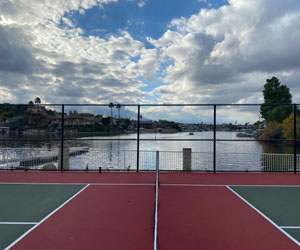
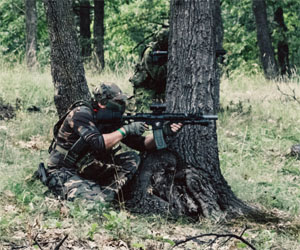
A Delightful Journey Into Nature's Avian Tapestry
 Patience And Observation: At the core of birdwatching is the practice of patience and keen observation. Birdwatchers learn to scan the landscape, often for extended periods, waiting for that fleeting moment when a bird reveals itself. The art lies in the ability to notice subtle details, from the distinctive plumage patterns to the unique behaviors that define each species.
Patience And Observation: At the core of birdwatching is the practice of patience and keen observation. Birdwatchers learn to scan the landscape, often for extended periods, waiting for that fleeting moment when a bird reveals itself. The art lies in the ability to notice subtle details, from the distinctive plumage patterns to the unique behaviors that define each species.
The Language Of Birds: Birdwatching introduces enthusiasts to the intricate language of birds. Through songs, calls, and visual displays, birds communicate with one another, and keen birders become fluent in this avian dialect. They can distinguish between the warning call of a robin and the joyful song of a thrush.
Identification And Expertise: The art of birdwatching involves learning to identify different bird species accurately. This skill requires an understanding of field marks, such as coloration, size, shape, and distinctive features. Birdwatchers often invest in field guides and apps to assist in this endeavor.
Habitat Exploration: Birdwatching is about more than just birds; it's also a journey into the diverse habitats that birds call home. Enthusiasts learn about the ecosystems, plants, and environmental conditions that support avian life. This ecological understanding enhances the appreciation of the interconnectedness of all living things.
Photography And Art: Many birdwatchers extend their artistic pursuits by capturing the beauty of birds through photography or art. It's a way to express the awe and wonder they experience in the avian world. Whether through sketches, paintings, or photographs, these creations become a reflection of the birdwatcher's connection with nature.
A Unique Connection
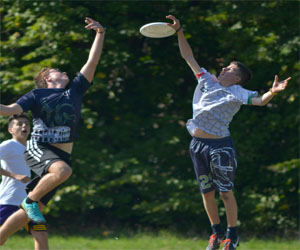 The counterculture movement of the 1960s and 1970s was a response to the prevailing social norms and institutions of the time. It championed ideas of peace, love, and freedom, and questioned traditional authority and societal values. It was during this era that flying disc sports emerged as a form of recreational and competitive activities that perfectly aligned with the counterculture's ethos.
The counterculture movement of the 1960s and 1970s was a response to the prevailing social norms and institutions of the time. It championed ideas of peace, love, and freedom, and questioned traditional authority and societal values. It was during this era that flying disc sports emerged as a form of recreational and competitive activities that perfectly aligned with the counterculture's ethos.
One of the most iconic flying disc sports, Ultimate Frisbee, was born in 1968 when a group of students at Columbia High School in Maplewood, New Jersey, came up with a new game involving a Frisbee. They emphasized self-officiation, teamwork, and a rejection of traditional hierarchy, mirroring the counterculture's principles of grassroots empowerment and autonomy. The sport quickly spread, capturing the imagination of those who sought alternatives to mainstream sports.